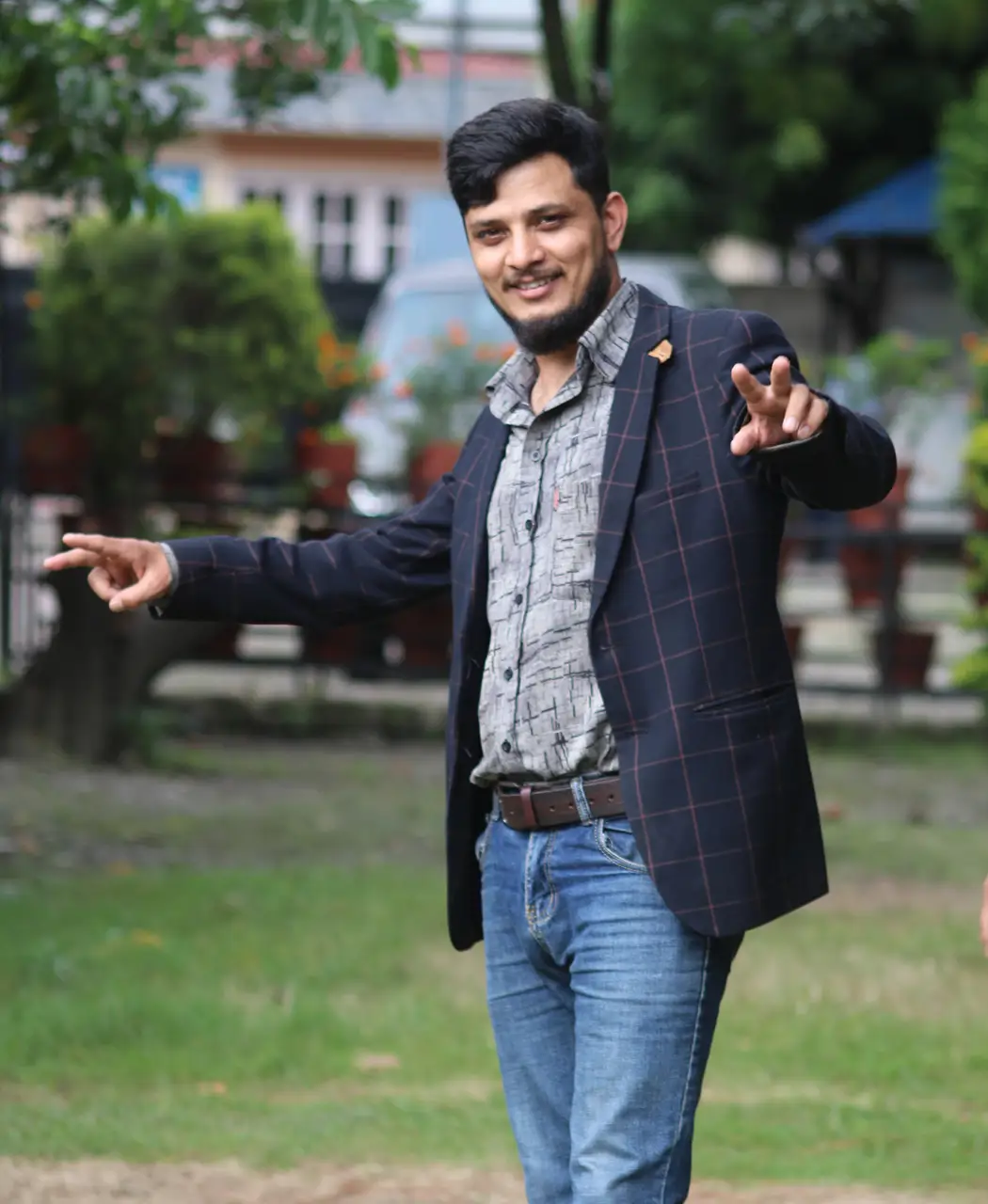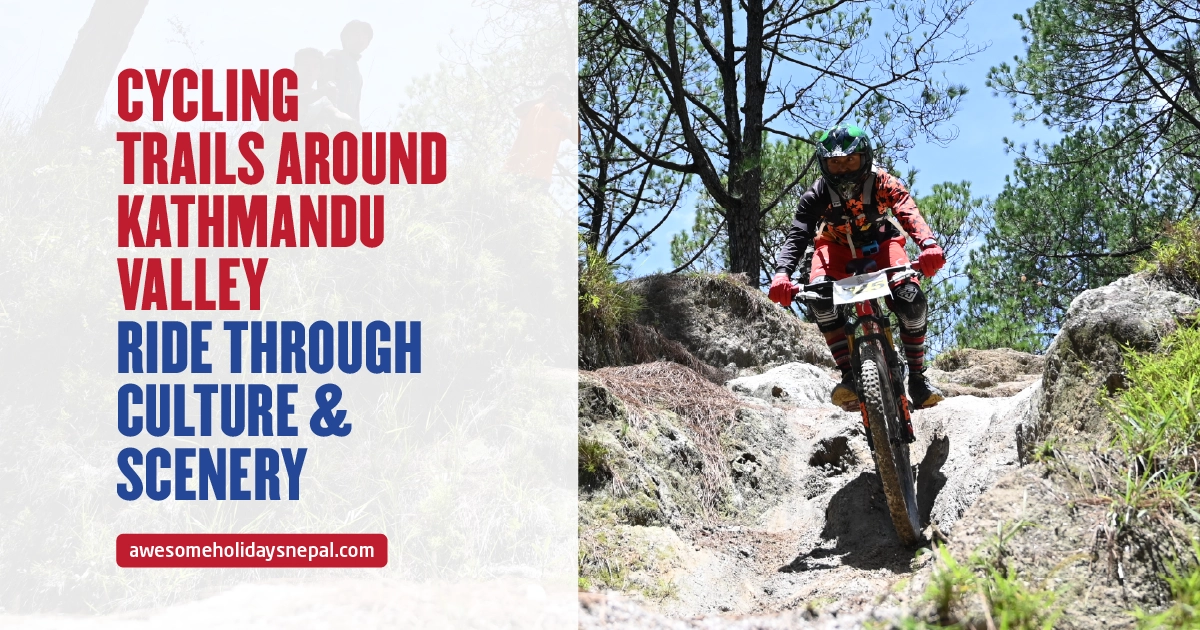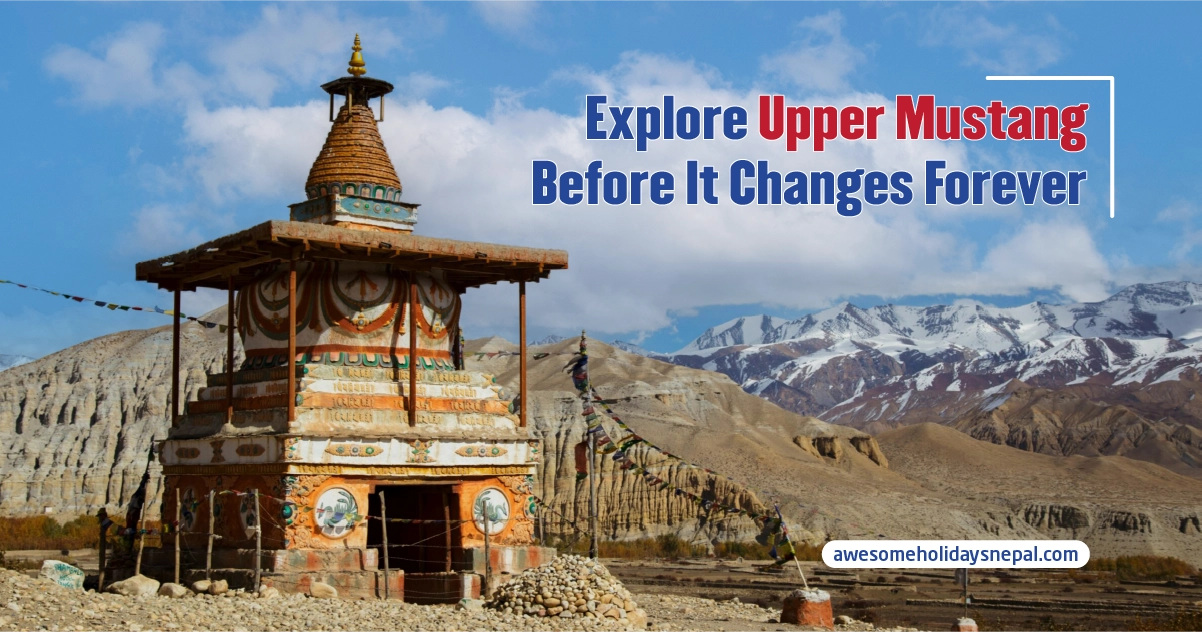Best Places to Visit in Patan Nepal: What Not to Miss?
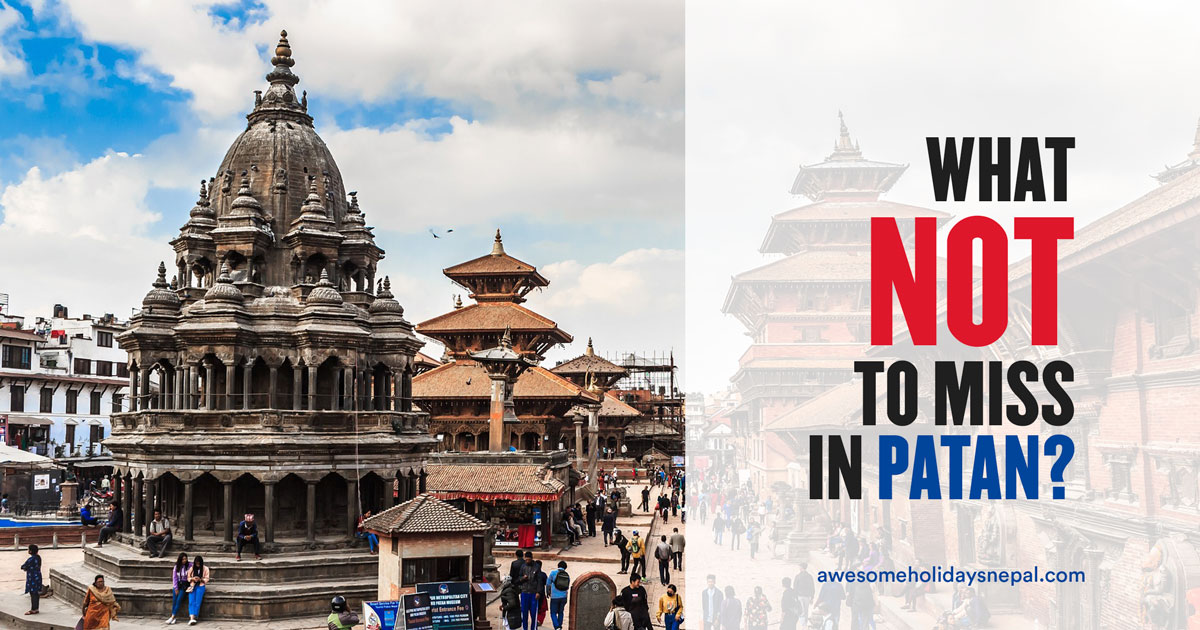
Are you planning to visit Patan, Nepal? If so, there are some must-see places that you shouldn’t miss at all!
Patan, also known as Lalitpur or Yala, lies across the Bagmati River from Kathmandu. It reflects a blend of Hindu and Buddhist traditions. The numerous stupas, viharas, and temples reflect the cultural harmony that has flourished in the Kathmandu Valley since the Lichchhavi and Malla periods. These eras, known as the golden age, saw the construction of many important temples and monuments throughout the valley.
This city of art and heritage, craftsmanship, and spirituality is famous for its well-preserved Newari architecture, Nepali-style and Shikhar-style temples, courtyards, and traditional brick houses. In fact, the city is well known for its fine arts and artisans, who specialize in woodcarving, metalwork, and stone sculptures.
Beside the worthy stops, the food tour and heritage walk are some of the best things to do in Patan. When you visit this city next time, here is a quick guide on what not to miss.
Best Places to Visit in Patan Nepal
Patan Durbar Square
As you enter the Patan premises, the palace square welcomes you with open arms. Patan Durbar Square is one of the best places to visit.
Built in the medieval Malla period, the palace square is the core of Patan, Nepal. Kings like Siddhi Nursing Malla and Jaya Prakash Malla ruled the kingdom until 1767 AD. The complex, which comprises numerous temples, museums, stupas, ponds, and stone taps, was listed as a UNESCO World Heritage Site in 1984 for its long history of culture.
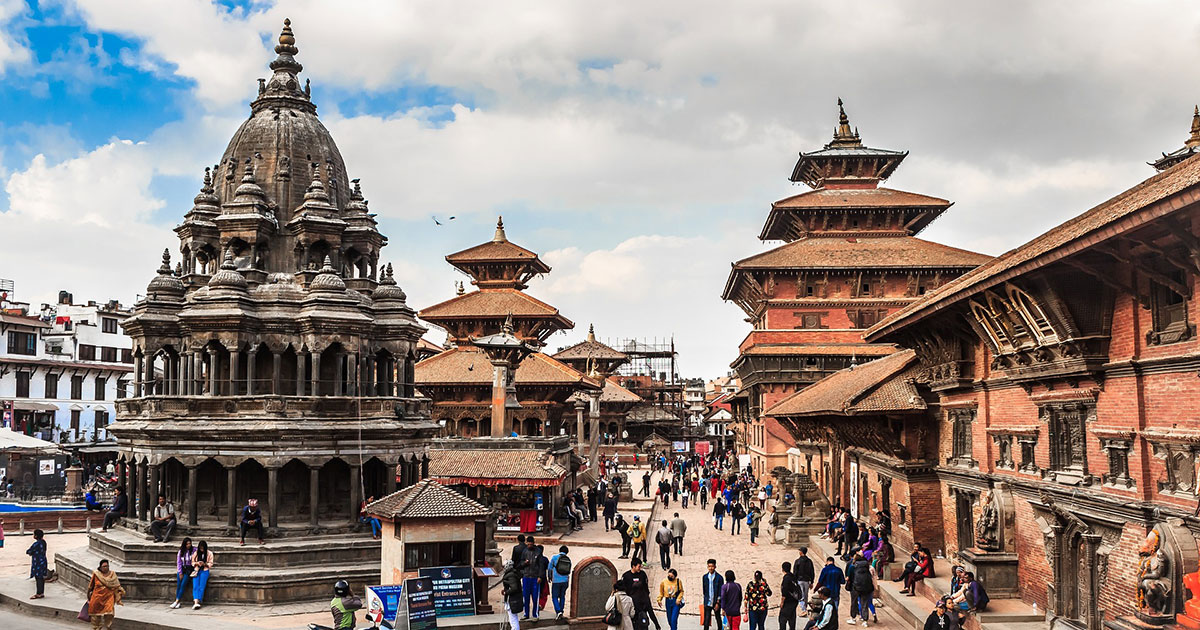
To list out these are the major attractions of Patan Durbar Square and its surroundings:
Patan Museum
Once a palace and residence of the Malla Kings, now this place near Keshav Narayan Chowk has been a place of collection of arts and converted into a museum. This is one of the most popular sites to explore the socio-cultural life of deep-rooted Newari lifestyle in Kathmandu Valley.
You will also get to see a lot of art and architectures of ancient times in Patan Museum. And the view of the courtyard from the peacock-eyed window is really amazing.
Krishna Mandir
Also known as Chayasim Deval, the Krishna Mandir in Patan is one of the most important and revered temples in Nepal. Located in the heart of Patan Durbar Square, it stands as a masterpiece of Shikhar architecture and an iconic symbol of religious and cultural heritage.
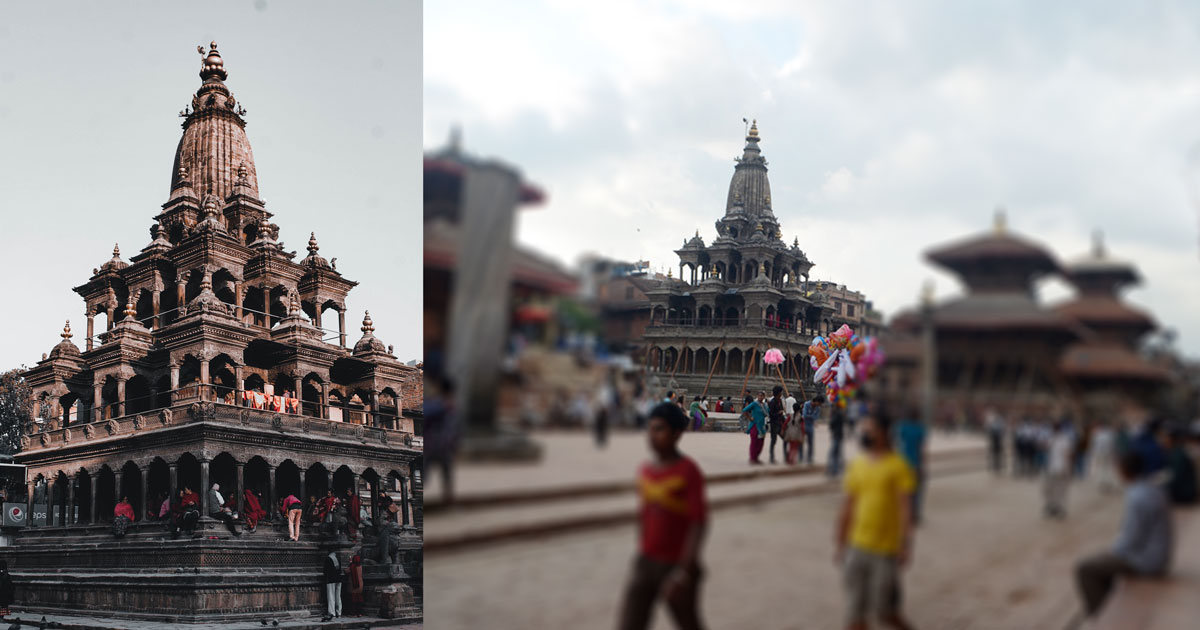
Dedicated to Lord Krishna, this temple is not only a significant religious site for Hindus but also an architectural gem with historical significance. Made during the reign of King Siddhi Naranayan Malla in the 16th century, who was a major patron of art and architecture. The temple was completed in 1637 AD.
Ashoka Stupa
This chaitya was made by Charumati, the daughter of the great emperor Ashoka. A stone inscription dating back to 1357 AD describes the reconstruction of the temple after Sultan Shamsuddin destroyed it.
Statue of Yoga Narendra Malla
Yoga Narendra Malla was the son of Srinivasa Malla and ruled Patan from 1685 until he died in 1705 AD. To the south of the Jagannarayan Temple is a tall column where a brass statue of King Yoga Narendra Malla and his queens lie. Approaching the king’s head is a cobra, and a small brass bird is on the head of the cobra.
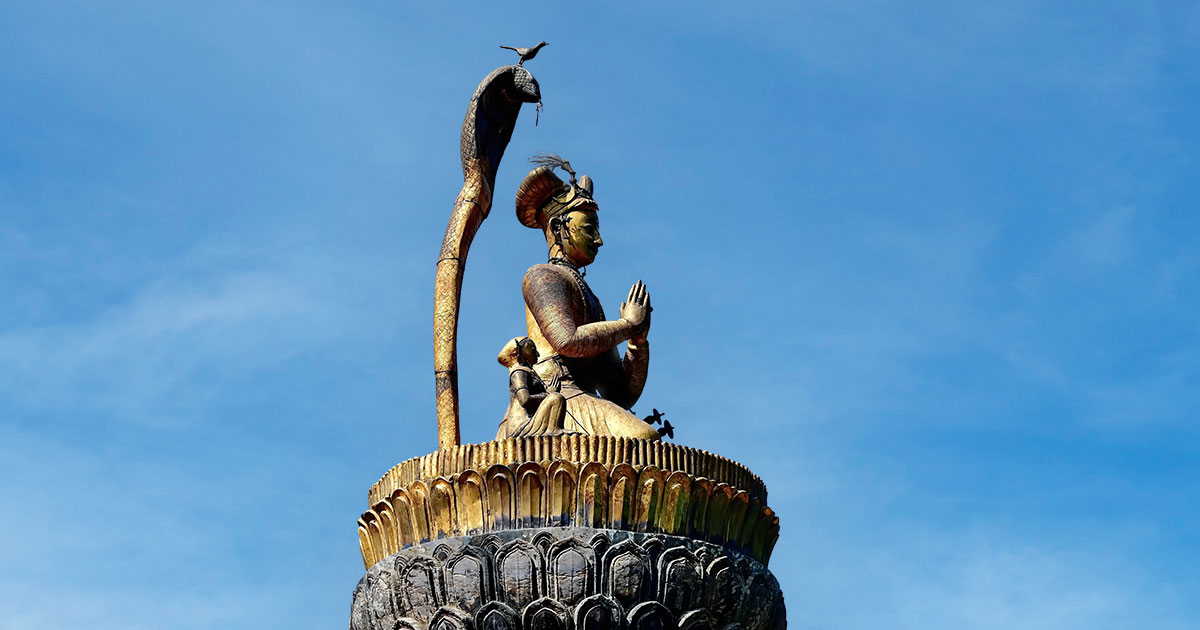
The legend says as long as the bird remains over the king’s head, the king will remain alive for eternity. A rider to the legend adds that when the bird flies off, the elephants in front of th the Vishwanath Temple and will walk over the Manga Hiti.
Four Asoka Stupas
The Four Ashoka Stupas of Patan are a group of four ancient stupas that are scattered around the four corners of the city of Patan (Lalitpur). These stupas were made by the great Buddhist emperor Ashoka during his pilgrimage to Nepal in 250 BC and promoted Buddhism. The four stupas are the Lagan Thura (South), the Teta Thura (East), the Pucho Thura (West), and the Ibahi Thura (North).
Golden Temple (Hiranya Varna Mahabihar)
It’s also called Kwa Bahal and Hiranyavarna Mahavihara, known for its golden metalwork. This temple has been in existence since the 12th century. The speciality of this temple is that a young priest of only 12 years worships the temple, and he serves just for a month. This temple and its territories hold ancient Buddhist traditions and keep them alive. The place is quite popular for feeding rats.
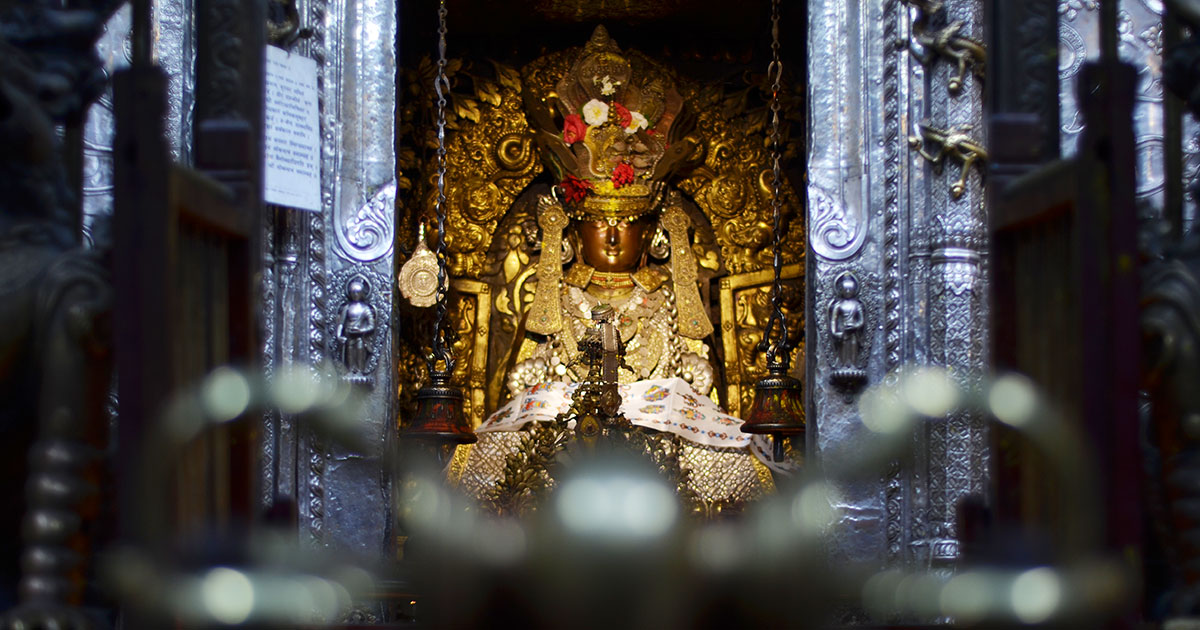
Kumbheshwor Temple and Banglamukhi Temple
This eye-catching architectural temple is called the Pashupatinath of Patan. Popularly known as Kumbeshwar lies near the Kwanti Hiti area. The artistic woodcarving of the five-story temple appears to defy gravity and instantly captures the attempt to touch the zenith.
Banglamukhi Temple is another temple dedicated to the deity Banglamukhi lies inside the Kumbheshwor temple complex. She is the 8th among 10 Mahavidhya. There are other temples like Manakamana Temple, Unmanta Bhairava, Gaurikunda, Harati Temple, Kedarnath temple, Badrinath temple, Char-Narayan Temple and ponds within the Kumbeshwor complex.
Mahabauddha Temple
Built-in 1585, this is one of the remarkable temples of the Shikhar style and is entirely made from terracotta. The construction of this stupa was begun by local priest Abhaya Raj Pandit and was completed by his grandson.
After the mass earthquake of 1934, it was badly damaged and reconstructed by the public with assistance from Chandra Shumsher Rana. This temple is also popularly known as the “Temple of a Thousand Buddhas” because of the thousands of Buddha idols on the terracotta tiles that replicate the actual Mahabauddha temple at Bodhgaya, India.
Red Machindranath Temple
Located to the south of Durbar Square, the temples of Machchendranath and Minnath are highly visited temples in Patan. This temple is well-known for Vietnamese architecture from the early era.
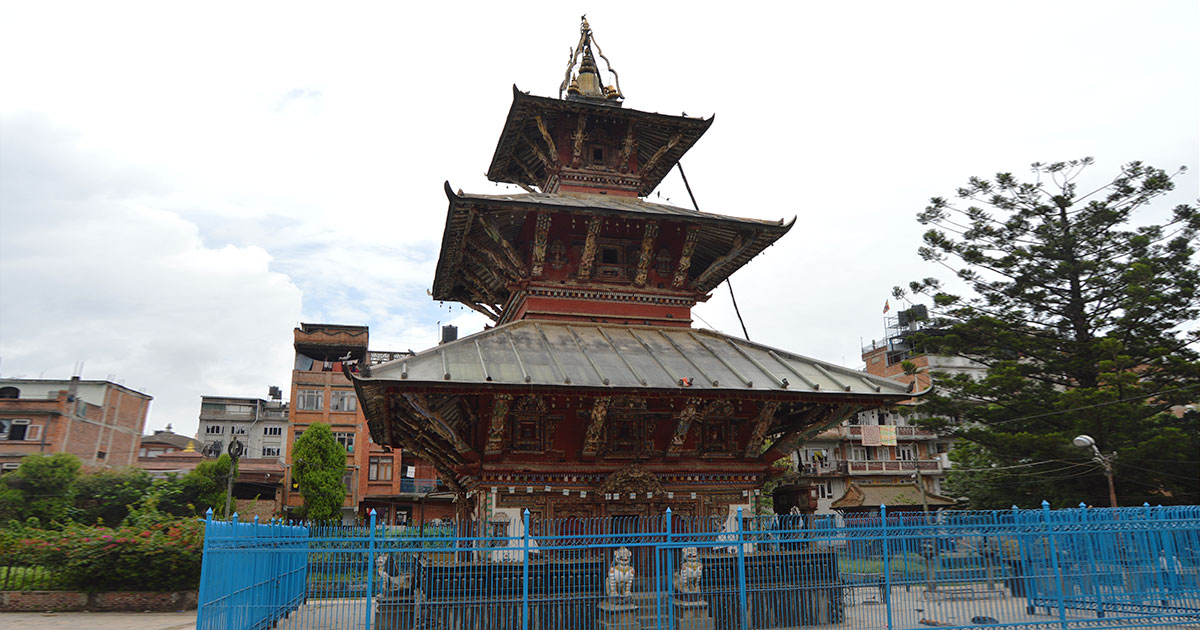
The Red Machindranath temple in Patan is one of the oldest temples from the 16th century in a large courtyard, Ta Baha. It lies 400 m south of Patan Durbar Square. Red Machindranath is worshipped by both Hindus and Buddhists as the incarnation of Avalokiteśvara.
Pimbahal Pond
Pimbahaa Pukhoo, or Pim Bahal Pokhari, is an artificial pond located within Durbar Square. As per the folk tales, this pond was built by Demon Lakhey. This pond is located next to the Ashok Stupa.
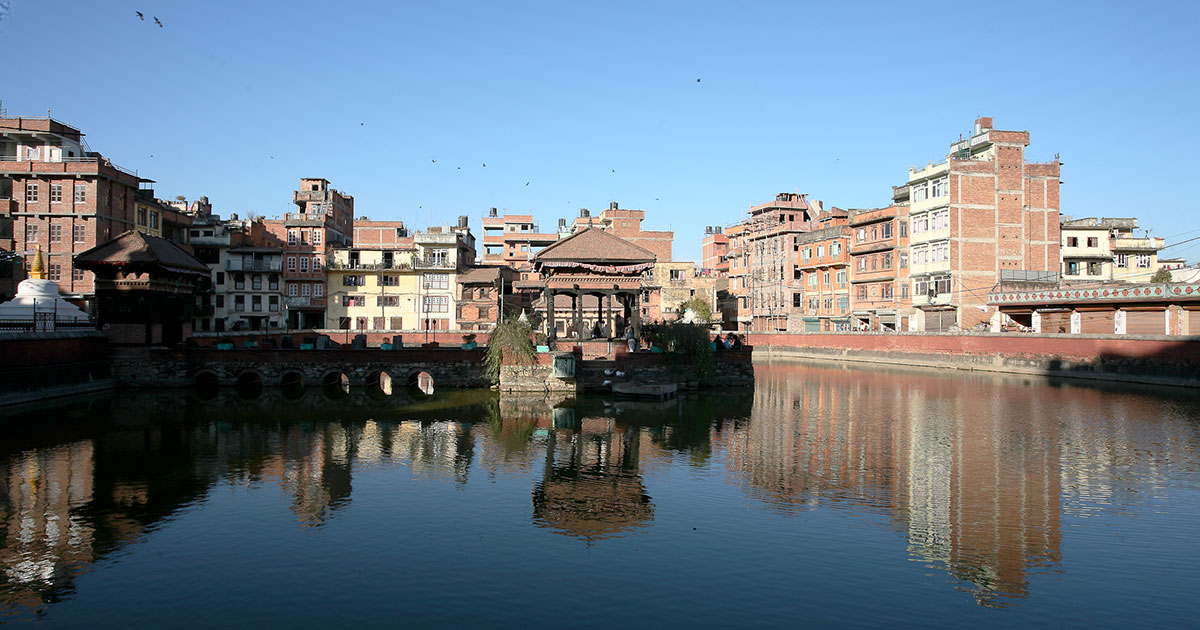
Rudra Varna Mahabihar (Uku Bahal)
This magnificent courtyard is called Uku Bahal or Rudra varna Mahabihar. It is one of the oldest Buddhist monasteries and a hub for Vajrayana Buddhism in the Kathmandu valley.
Mangal Bazar
Mangal Bazar is a well-known commercial hub in Lalitpur. This market is famous for its lively street markets, where you can find a variety of goods, from clothes and accessories to traditional Nepali products and street food. The area is particularly lively during festivals and local events.
Attractions Beyond Patan Nepal: The Highlights of Lalitpur City
Godawari Botanical Garden
The National Botanical Garden, established on October 28, 1962, is a renowned center for plant conservation, education, research, and recreation under the Department of Plant Resources, Ministry of Forests and Environment. Occupying an area of 82 hectares at the base of Phulchowki Hill, it features diverse thematic gardens, a natural evergreen forest, and the scenic Godawari stream flowing through its landscape.
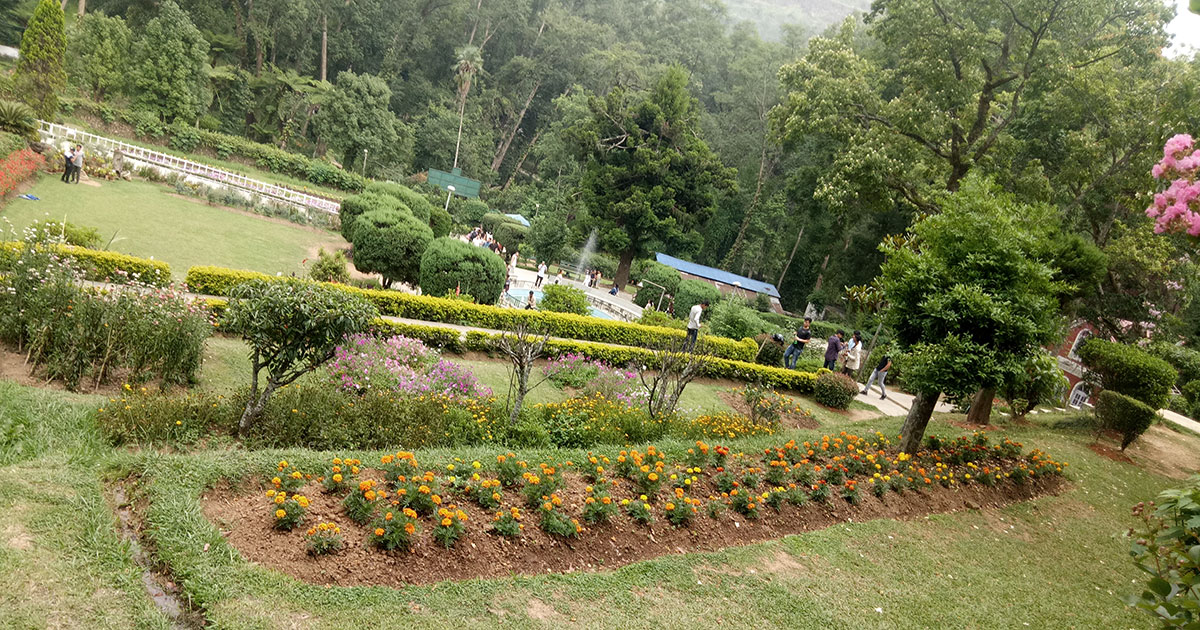
Khokana and Sikali Jatra
On the month of Ashwin and Kartik, when the entire world is busy celebrating Dashain, the villagers of Khokana celebrate the Rudrayani festival, popularly known as Sikali jatra. This festival is well known for mask dances and sacrifices. Commencing from Ghatasthapana, the first day of Dashain, this festival ends on the eighth day by establishing the idol of the deity Rudrayani. Goddess Rudrayani is also known as Maheshwari, a manifestation of goddess Parvati.
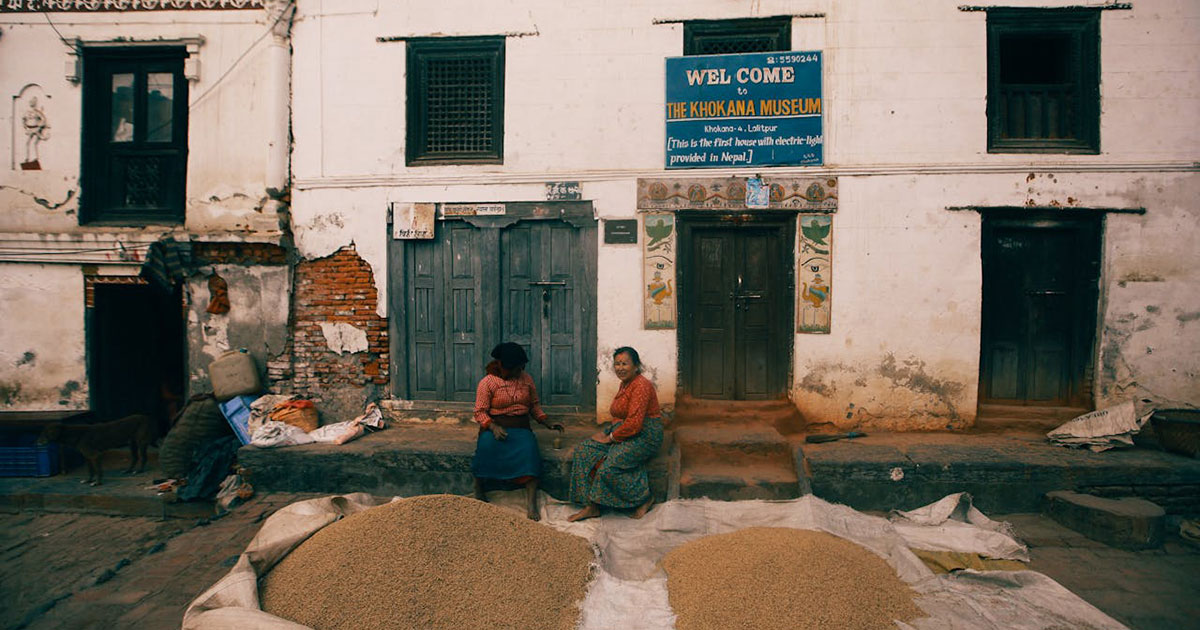
The Sikali temple lies in the serene and peaceful green space of Sikali near the Bagmati River. The city of Khokana is believed to have been established in the 15th century during the regime of King Amar Malla. This small traditional Newari village in the southern part of Kathmandu Valley is known for its mustard cultivation and oil mills.
Hari siddhi
The temple of Sri Harasiddhi Bhavani Trishakti Devi lies in Ward No. 28 of Lalitpur Metropolitan City. This temple, located in the central part of Harisiddhi, is also called Jatal or Jala. This temple is located in the middle of Jatal (Harisidshi) settlement. Sri Harasiddhi Bhavani is seated on the first floor of the Harasiddhi Temple, built in the Nepali Pagoda style. The Kalashes kept inside the temples represent the goddess and are worshiped as Shri Harasiddhi Bhavani Trishakti Devi, Bhairabha and Kumari.
Central Zoo
Home to a total of 942 individual mammals, birds, fish, and reptiles of 127 species, this is the largest zoo in Nepal with an area of 6 Hectares (15 acre). The zoo is now operated by the National Trust for Nature Conservation. The park was opened to the public in 1956 and was once a private park of Rana Prime Minister Juddha Shumser Rana.
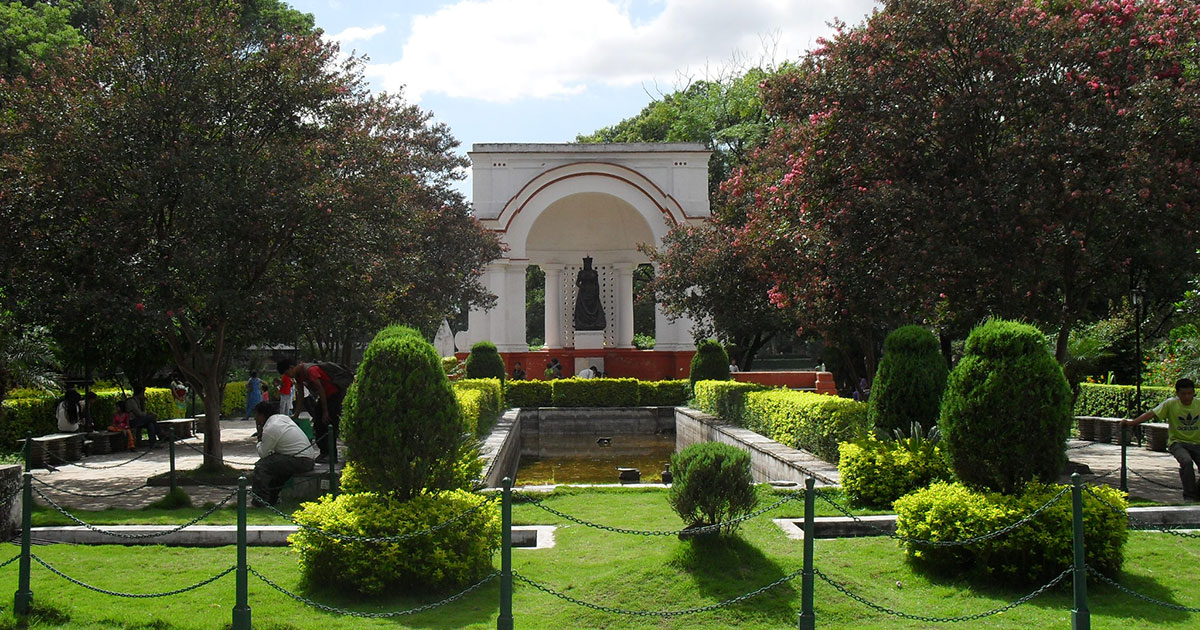
Witness the City of Arts and Architecture
Patan represents a journey into timeless, alluring, and vivacious cultural heritage leap into the depth of Nepalese history and tradition. From Patan Durbar Square’s breathtaking scenery to the serene atmosphere of the temples and intrinsically designed courtyards, every nook and corner of this ancient city has an artistic whisper, a whisper of devotion and survival.
As your tour operator, we invite you to explore with us the hidden charms of Patan, where every moment is a blend of learning and wonder. Whether you are a history enthusiast, an art lover, or a curious traveler, Patan promises an experience that will stay with you forever. Let us guide you through its treasures and ensure your visit is as enriching as it is memorable. Your next great adventure awaits in the cultural heart of Nepal.
Join us, and let’s make your journey extraordinary!
FAQs
Expand AllWhat is Patan famous for?
Patan, also known as Lalitpur, is renowned for its rich cultural heritage, exquisite Newari architecture, and metal craftsmanship. It is famous for its stunning Patan Durbar Square, Khokana, and Bungmati full of temples, courtyards, and fine arts, showcasing a blend of Hindu and Buddhist traditions.
Where is Patan Situated?
Patan is situated in Lalitpur District of Kathmandu Valley.
Which is the must-visit place in Patan?
The Patan Durbar Square is a UNESCO World Heritage Site and the centerpiece of the city’s attractions. It features magnificent temples, courtyards, and the Patan Museum.
What are the Four Ashoka Stupas?
The Four Ashoka Stupas are ancient Buddhist structures built by Emperor Ashoka during his pilgrimage in 250 BC. They are located at the four corners of Patan at the Lagan Thura (South), the Teta Thura (East), the Pucho Thura (West), and the Ibahi Thura (North).
Are the Ashoka Stupa and Four Ashoka Stupa related?
The Four Ashoka Stupas were made by emperor Ashoka himself, whereas the Ashok Stupa at the Ibahil Tole was made by Charumati, the daughter of the great emperor Ashoka.
What is the price of a ticket to the Zoo?
The entry fee to the zoo differs as per age and nationality. Here is the complete list of prices of entry to the Zoo.
What makes the Golden Temple unique?
The Hiranya Varna Mahavihar, or the Golden Temple, is known for its golden metalwork and ancient Buddhist traditions. A young priest worships here for only one month, maintaining its unique rituals.
Can you explore Patan on foot?
Yes, most of the attractions in Patan, including Patan Durbar Square, the Golden Temple, and nearby temples, are close to each other and easily walkable.
What is special about the Mahabouddha Temple?
The Mahabauddha Temple, built entirely of terracotta in 1585, is often called the “Temple of a Thousand Buddhas” due to the intricate Buddha designs on its tiles.
Who is known as the living king?
King Yog Narendra Malla is known as the living king of Nepal.
What can you find at Mangal Bazar?
Mangal Bazar is a lively market where you can shop for traditional Nepali products, clothes, and accessories and enjoy delicious street food.
Is Patan suitable for art and history enthusiasts?
Absolutely! From ancient temples and stupas to the Patan Museum and intricately designed courtyards, Patan is a paradise for art and history lovers.
What is the opening time of the Godawari Botanical Garden?
The Garden opens at 9:00 AM till 4:00 PM for 365 days a year. But you won’t be allowed to enter the garden after 2.
What makes Kumbheshwor Temple unique?
The temple is famous for its intricate wood carvings and sacred pond, believed to drain water from the holy Gosaikunda Lake.
Related blog posts
Discover a choice of tourist destinations loved by most of our visitors. Whether you're on a jungle safari to spot rare animals or walking through a world heritage site, these well-planned itineraries cover the major highlights of Nepal.

